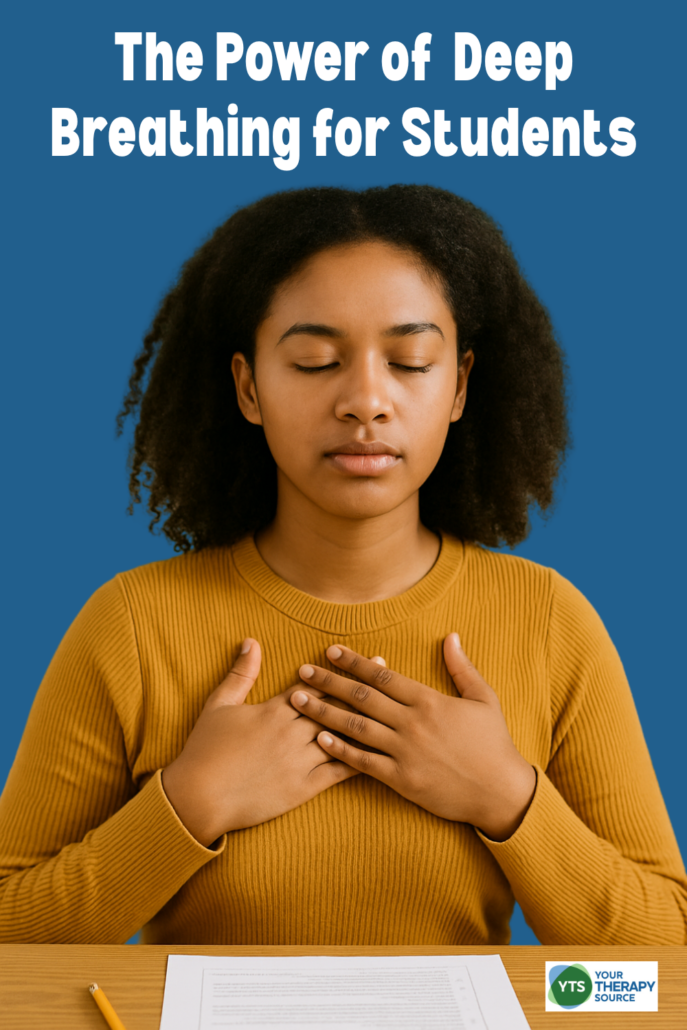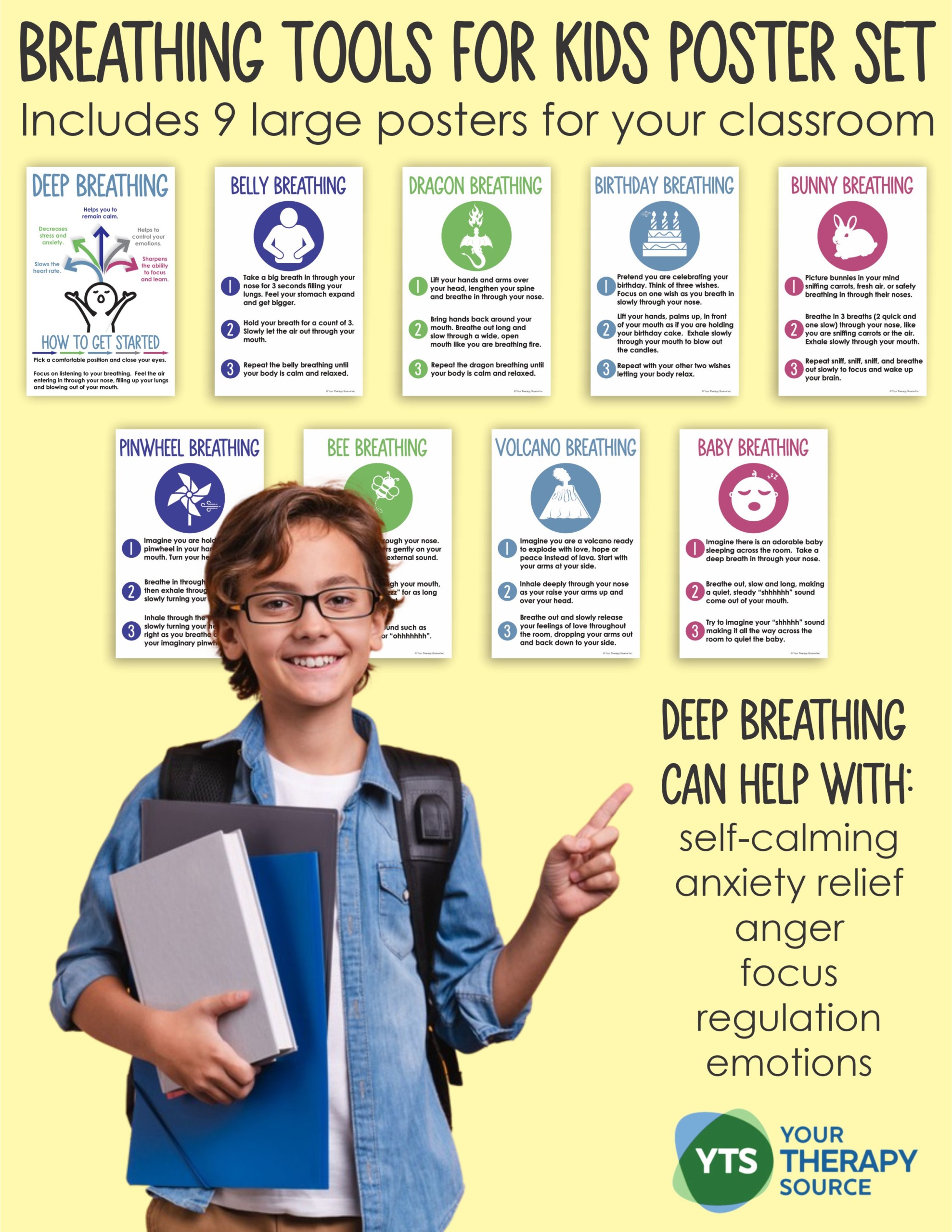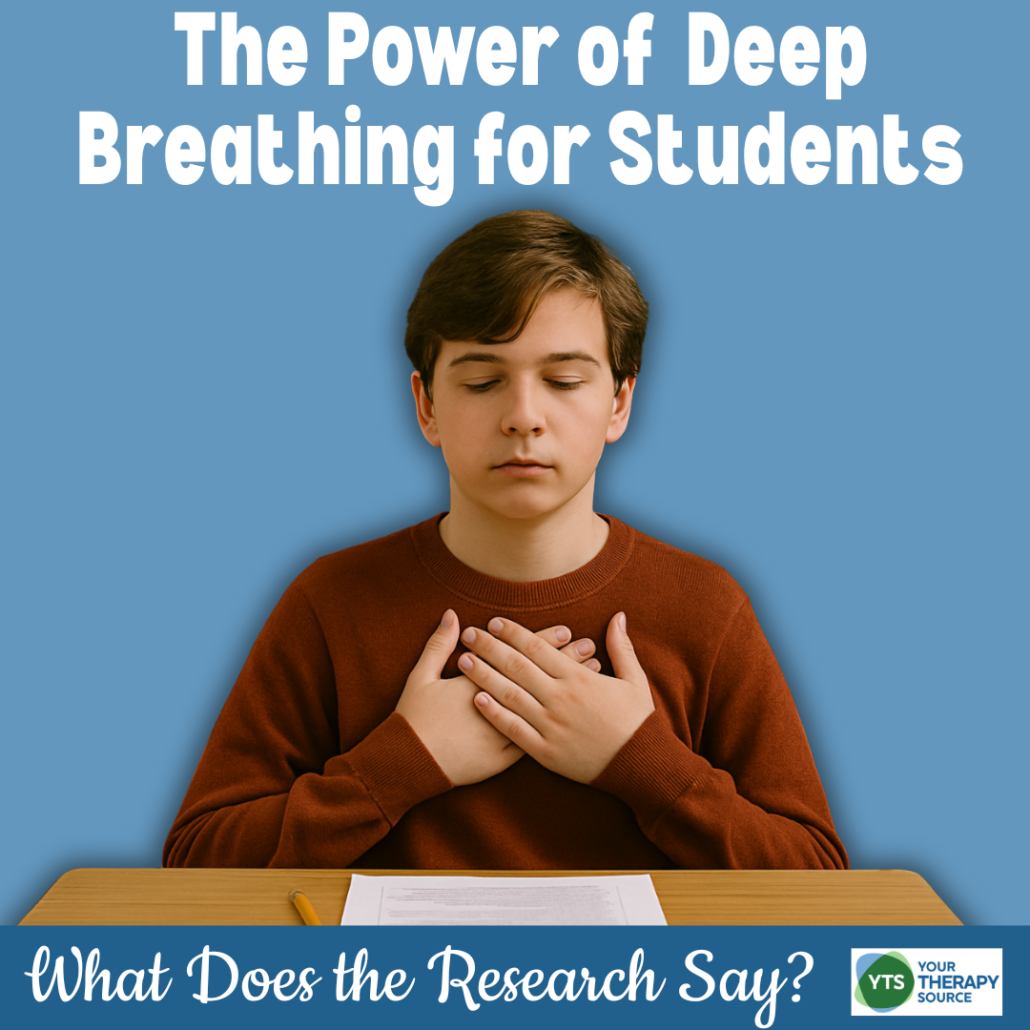The Power of Deep Breathing for Students
Students today, even from a young age, face increasing stress, busy schedules, and emotional ups and downs. Whether you’re a pediatric therapist, teacher, or parent, one simple yet powerful tool you can teach is deep breathing. It’s easy to learn, free, and can be practiced anywhere. Learn more about the benefits of deep breathing for students, what research says, types of exercises you can try, and how to get started today.

BENEFITS OF DEEP BREATHING
Deep breathing is more than just taking a slow breath. It activates the parasympathetic nervous system, the body’s natural “calm down” response. Regular practice can help students and adults:
- Feel calmer during stressful moments
- Improve sleep quality
- Boost mood and happiness
- Reduce worry and anxiety
- Enhance focus and self-regulation
Deep breathing is especially useful during transitions at school, before tests, at bedtime, or any time emotions start to run high.

Breathing Tools for Kids Posters
WHAT DOES THE RESEARCH SAY?
A 2025 study by Crișan et al., published in BMC Public Health, investigated a 14-week structured breathing program for physical therapy university students. After practicing deep breathing for just 30 minutes a week, students showed:
- A significant increase in happiness
- Improved emotional regulation
- Better sleep quality
- A reduction in worrying
Students who did not practice deep breathing did not experience these benefits, emphasizing how important consistent practice can be. The study focused on teaching three main types of deep breathing exercises.
TYPES OF DEEP BREATHING EXERCISES
The study introduced students to three effective breathing techniques:
- Diaphragmatic Breathing:
Students learned to breathe deeply into their bellies instead of their chests. They placed one hand on the chest and one on the abdomen, practicing breaths that expanded the abdomen while keeping the chest still. This type of breathing helps promote relaxation and emotional regulation. - Pursed-Lips Breathing:
Students inhaled slowly through their noses, then exhaled even more slowly through lips held in a small “pursed” shape (like blowing through a straw). This method helps control breathing pace and improves calmness, especially when feeling anxious or stressed. - Alternate Nostril Breathing:
Using the thumb and ring finger, students alternated closing one nostril at a time while breathing in and out. This technique can balance the nervous system and is often used to create a sense of centeredness and emotional balance.
Each session included instruction, demonstration, and personalized feedback to help students learn and apply these exercises to everyday life.
HOW TO START THE PRACTICE OF DEEP BREATHING
Starting a breathing routine doesn’t have to be complicated. Here’s how to build the habit:
- Start small: Aim for 1–2 minutes a day. A few slow breaths can make a big difference.
- Pick regular times: Before school, after lunch, or right before bedtime are good opportunities.
- Use a visual or physical prompt: A star to trace, a hand on the belly, or a visual reminder can help build consistency.
- Make it fun: Incorporate movement, imagery, or songs to keep kids engaged.
- Model it yourself: Practice breathing with your students or children. They learn by watching!
- Be consistent: The study showed even once-a-week guided sessions helped. Daily short practices can create even stronger habits over time.
If you’d like ready-made tools to support the habit, you can also explore printable resources and guides.
MORE HELPFUL RESOURCES
Looking for creative ways to make deep breathing fun for kids? Check out these ideas:
- Breathing Star Printable Activity
- Bumblebee Breathing Break (fun humming activity)
- Deep Breathing Exercises for Children
- Breathing Activities for Kids
- Breathing Breaks – Deep Breathing Exercises Product
Teaching students how to pause and breathe deeply offers them a lifelong tool for handling emotions, calming their bodies, and building resilience — one breath at a time.
REFERENCE
Crișan, A. F., Pescaru, C. C., Maritescu, A., Carunta, V., Stoicescu, E. R., Oancea, C., … & Onofrei, R. R. (2025). A 14-week structured breathing program: an investigation into its impact on psychological health parameters in university students. BMC Public Health, 25(1), 1395.



